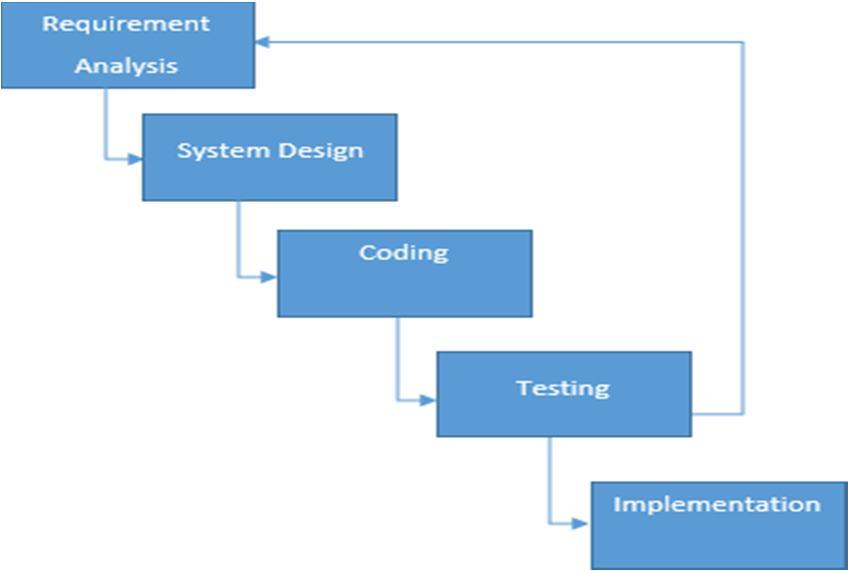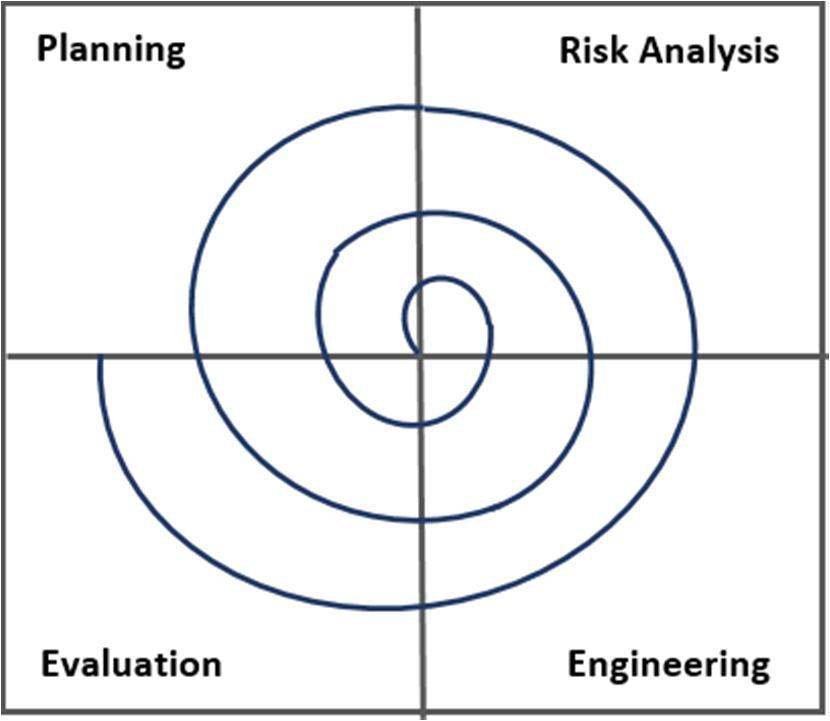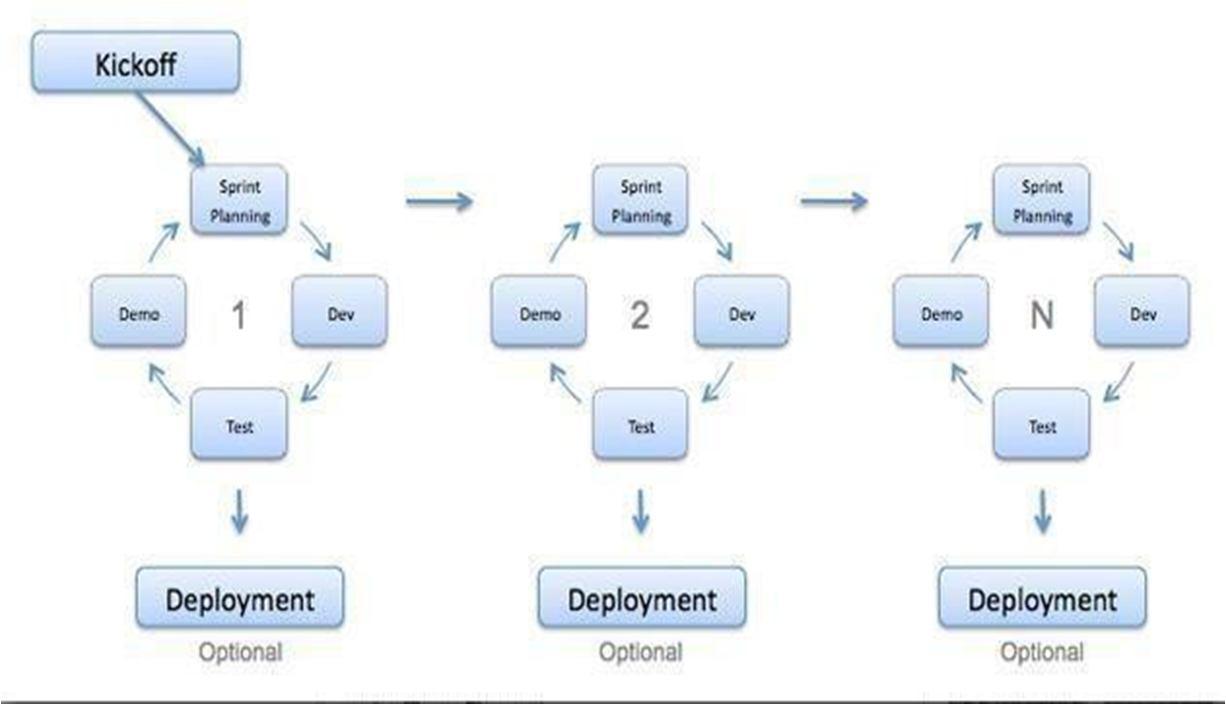
ISSN: 2321-9653; IC Value: 45.98; SJ Impact Factor: 7.538 Volume 10 Issue XII Dec 2022- Available at www.ijraset.com


ISSN: 2321-9653; IC Value: 45.98; SJ Impact Factor: 7.538 Volume 10 Issue XII Dec 2022- Available at www.ijraset.com
Somya Gupta1, Janvi Banga2, Sourabh Dabas3, Dr. Manjot kaur Bhatia4 1, 2, 3Jagan Institute of Management Studies, Sector-5, 3-Institutional area, Rohini, Delhi, India 4Associate Professor, Jagan Institute of Management Studies, Sector-5, 3-Institutional area, Rohini, Delhi, India

Abstract: Software development is one of the most powerful, important and necessary hour in today's generation. Every organization, industry, small business, constitutions etc. require software for the functionality of their system and the reduction of manual labor or traditional work that used to be precarious and had more mistakes. SDLC is about minimizing risk and failure and maximizing product quality. To development it works in a step-by-step procedure and the SDLC was just created. The SDLC defines a framework that includes various activities and tasks performed during the software development process. There are many types SDLC models that have their advantages and disadvantages and will work as according to their needs.
Keywords: Software development life cycle, models, prototypes, modeling, development ,Comparative analysis.
The SDLC contains a detailed structure plan on howto develope the software system. A sdlc is a model which describes the overall area assoftware development is ongoing with a description of each phase of doing things. There are different types of models such as Waterfall model, V-shapedmodel, Evolutionary prototype model, spiral model,Iterative and incremental model &agile model. In this Each model has its advantages and disadvantages and depending on how our projects are and accordingly we need to implement the model.
SDLC is a systematic approach to software completion development process over time and maintain software quality. System development a life cycle provides a set of activities that need to be performed during system development and that is often called ”software development life cycle”. This is divided into a set of activities which allow any software development company to review the product easily. It uses a step-by- step approach complete the software developmentprocess. If the process is strong, the end will be strong too and the project can be a success.
During development developers who are developing good software product directly orindirectly involved in this process keep the following points in mind:
Tools A software process model is a representation of the process and given arethe description ofthe process are as:
Thesoftwaredevelopment life cycle is about:
Understandingtheproblem. ie(problemdomain)
Decide on a solution plan.ie (solutiondomain)
Coding ofthe planned solution

Test the current program
Maintain the product
ISSN: 2321-9653; IC Value: 45.98; SJ Impact Factor: 7.538 Volume 10 Issue XII Dec 2022- Available at www.ijraset.com

The profession "software developer" exists fromthe first computers and their operators tothepresent back like the time of ENIAC andtubes.
Practices and methods for softwaredevelopment have been evolved over the decades since its invention computer. These methods have adapted to the state of the art in computer hardware, development tools and modern think about organizational management software development teams. With this progress new software development methods grew out of private and public software development effortsaroundtheworld. These methods are very different in approach, yettheyshare a common goal: to develop software as cheaplyas possible, effectively and as efficiently as possible.
Pioneer of software development, Winston Royce designed a waterfall in 1970. It belongsto the oldest SDLC model, but it has not been used much in recent years.It follows a linear sequential flow in which progress is made andsee how it flows down the development stage.Here, all requests are collected at the address of the project start and then go to next phase. Each stage depends on information collected at an earlier stage as it does not allow transition to the nextphase until the previous phase was completed. The waterfall approach doesnot allow the process to return to the previous stage and allow changes to it. The waterfall model is used for small projects because there is little scope for revisions once the stage is complete. In the waterfall model problems cannot be solved until you get to maintenance stage. Stages in a waterfall model include stages such as requirements analysis, system design, implementation,testing, deployment and maintenance.

The iteration model uses an iteration that over comes a weakness of the waterfall model. Unlike waterfall model where therequest was requested only once but the requirements for the iterative model are gathered each phase. The project is divided into small components so that theresult can be used in next phase. There is feedback made that after each increment collected from the client based on which other process is planned and made. New version of the software is produced at each stage and is repeat until the entire system is ready.


ISSN: 2321-9653; IC Value: 45.98; SJ Impact Factor: 7.538 Volume 10 Issue XII Dec 2022- Available at www.ijraset.com

The V-model is an SDLC model where theexecution ofprocesses takes place in a sequential V-shaped. It is also known as the "verification and validation model". This Model is an extension of the waterfall model and is based on connecting a test phasefor each corresponding development phase. This means that for every single phase of the development cycle there is a directly related test phase. This is a highly disciplined model and thenextphase startsonlyafter thepreviousphase is completed.

The Agile model was primarily design to help aproject to adapt to change requests quickly. So the main goal of the agile model is to facilitate fast projectcompletion. To accomplish this task isagility Required. Agility is achieved by adapting the process project, eliminating activities that may not be necessary for a specific project. Also anything that is wasteoftime and effort is prevented. An agile model refers to a group of developmentsprocesses. These processes share some fundamentals properties but have some subtle differences between them. SeveralAgile SDLC models areListed below:
1) Crystal 2) Atern 3) Feature-drivendevelopment 4) Scrum 5) Extreme Programming (XP) 6) Lean development 7) Unified process
In an agile model, requirements are distributed into many small parts which may be successive developed. The Agile model uses Iterative development. Each sub-part is developed through iteration. Each iteration is meant to be small and easy to handle and can be completed within a fewweeks. At a time one iteration is planned, developed and deployed customers. Long-term plans are not made.
An agile model is a combination of iterative and incremental process models. Steps include in the agile
TheSDLC models areas follows:
a) Gatheringrequirements b) Requirementsanalysis c) Design d) Coding e) Unit testing
f) Acceptance exams Principles ofAgile model: To establish close contact with the customer during development and gain a clear understanding of different requirements, each agile project usually includes a customer representative in the team.

ISSN: 2321-9653; IC Value: 45.98; SJ Impact Factor: 7.538 Volume 10 Issue XII Dec 2022- Available at www.ijraset.com

The agile model relies on the functional deploymentofsoftware rather than comprehensive documentation. Requests to change the requirements from the customer are supportedand effectivelyincorporated. Emphasizes on having effective team members and the improvement of communication between themis given greater importance. The communication between the development team members can be reached face to face communication rather than through exchange formal documents. Recommended that the development team size should be small(5 to 9people) to helpthe teammembers engage meaningfully faceto-face communicate and have a collaborate work Environment.
A prototype model is software development modelthat is used to produce aprototype software version. This model is used when customer or user has no specificor detailed product information. In this model it is the developer that can start developingthe software minimum information and requirements then take user feedback and make relevant changes accordingly to the user and redefine the product. It is an iterative, trial and error process that goes on between the developer and the client. Main goalof this model is to provide a system with a total functionalityso the client can checkand providerequired changes. In this modelwe havesix different stages that include requirements,rapid design, prototyping, user evaluation, prototype refinement, implementation and maintenance.

This model is one of the most important Software development life cycle models, it is used for risk management which combines waterfall model and iterative model. . In this model, each phase begins with a design goal and ends with the client checking the progress. This model is used for majorly for large projects that include the risk and cost. The spiral model has four different phases include planning, risk analysis, engineering and evaluation as shown in the figure:



ISSN: 2321-9653; IC Value: 45.98; SJ Impact Factor: 7.538 Volume 10 Issue XII Dec 2022- Available at www.ijraset.com

SDLC is a systematic software development process which ensures quality and correctness created software.The structure imposed by this SDLC is specificallydesigned to maximize the probability of a successful software development efforts. Consists of how to plan, build, and maintain specific software. All software starts as concept and flows through a series of stages until a release is developed and deployed. Software the development life cycle of an application or system continues with updates and new features Until day it is decommissioned or replaced. Several methods for software development have evolved decade.
[1] https://www.geeksforgeeks.org/software-engineering-prototyping-model/
[2] https://economictimes.indiatimes.com/definition/prototype-model
[3] https://searchcio.techtarget.com/definition/Prototyping-Model
[4] https://www.guru99.com/software- engineering-prototyping-model.html
[5] https://www.tutorialspoint.com/sdlc/sdlc_software_prototyping.htm
[6] https://www.w3schools.in/sdlc-tutorial/spiral-model/
[7] https://www.geeksforgeeks.org/software-engineering-spiral-model/
